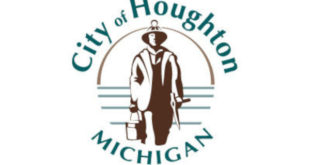Keweenaw County sees an average of 245 inches of snow every year.
That much snow makes it challenging for the Keweenaw County Road Commission to make it through the winter, especially with decreased funding over the years.
The County Road Association of Michigan says a road millage passed in August 2014 is starting to make things a lot easier.
While the millage acts as a boon to Keweenaw County, that doesn’t mean that all concerns can be addressed at once.
Engineer-manager of Keweenaw County Road Commission Gregg Patrick says he tells people to be patient, saying not only does the county have bad roads, but they have old equipment and an old building.
Patrick says they have both short and long term plans and the board of commissioners is currently reviewing how to best approach all of the things they need to do.
The first funds were collected in 2015 to pave a few local roads, including roads important for logging, Keweenaw County’s number one industry.
Progress is continuing, which Patrick calls “encouraging”.
Here is the full press release from the County Roads Association of Michigan.
Millage and local ties unite Michigan’s snowiest county
Lansing, MI – There’s nothing usual about Keweenaw County. It’s the largest county in the state until you subtract Lake Superior land rights; then Keweenaw is the smallest geographic area in Michigan with the smallest populace.
Keweenaw County’s 2,100 residents welcome 245” of average snowfall every year. That much snow makes it challenging for residents and the Keweenaw County Road Commission (KCRC) to make it through the winter.
“The first day on the job, my predecessor said you budget and plow for winter and whatever you have left over is what you can use for summer,” according to Gregg Patrick, PE, engineer-manager of Keweenaw County Road Commission. “We still live that way – it keeps our schedule very fluid. Forty percent of our budget is winter maintenance-related.”
Not too long ago, as many as 30 employees could be found out on the plows like clockwork, even if there was a single inch of snow. A decrease in funding over the last decade has affected efforts to keep roads clean and convenient, so KCRC is careful with the tools at their disposal. Most residents are still plowed out between 5 and 10 a.m.
“We have implemented some efficiencies, which change the routes depending on the conditions,” said Patrick, a graduate of Michigan Technological University and life-long resident of the UP. “It took a while, but people have gotten used to it.”
Despite the challenges of winter and decreased road funding, Keweenaw County Road Commission has been inventive and creative in stretching its dollars. In one instance, KCRC was not able to fix an important road for tourism, so they stretched funding by prioritizing specific segments of the road.
This kind of self-reliance is perhaps in part why a county-wide millage came as a surprise to Patrick, particularly the strong approval numbers.
“At the county meeting, we had 13 people- half of them being local elected officials,” said Patrick. “So we were pleasantly surprised when it passed by a 68-to-32 margin.”
The idea behind the millage started with one township at a local level. As township supervisors spoke to their neighbors about the benefits, interest grew across Keweenaw. Eventually, the county commission agreed to put two mills on the August 2014 ballot.
After the millage passed, a committee formed that includes five township supervisors, Keweenaw County Road Commission and one road commissioner. The committee is responsible for prioritizing roads and distributing resources to solve problems that affect county residents the most.
While the millage acts as a boon to Keweenaw County, that doesn’t mean that all concerns can be addressed at once. KCRC still works with older equipment and infrastructure. Their offices alone are located in the century-old Mohawk Mining Company machine shop, a site integral to the history of Keweenaw County.
“With the new road funding, I tell people to be patient,” according to Patrick. “Not only do we have bad roads, but we have old equipment, and we have an old building. We have both short- and long-term plans, and our board of commissioners is currently reviewing how best to approach all of the things we need to do.”
The first funds were collected in 2015 to pave a few local roads, including roads important for logging, Keweenaw’s number one industry. Patrick has known some loggers for decades, which eases communication on different road issues. A similar line of communication exists around hotels and other businesses that shape tourism, another major form of county revenue that depends on good roads.
Keweenaw County Road Commission can also put purchased equipment like their asphalt zipper to crush pavement to good use with the new dollars. The work at KCRC is almost exclusively in-house, yet it has been the first time in 20 years that they have been able to fully prepare roadways for paving on their own.
“Seeing some progress made is encouraging,” according to Patrick. “It’s been stagnant for so long.”
The 83 members of the County Road Association represent the unified, credible and effective voice for a safe and efficient local road system in Michigan, collectively managing more than 73 percent of all roads in the state—more than 90,000 miles and 5,700 bridges—the fourth-largest county road system in the nation.
 Keweenaw Report Your Source for Local News and Sports
Keweenaw Report Your Source for Local News and Sports





